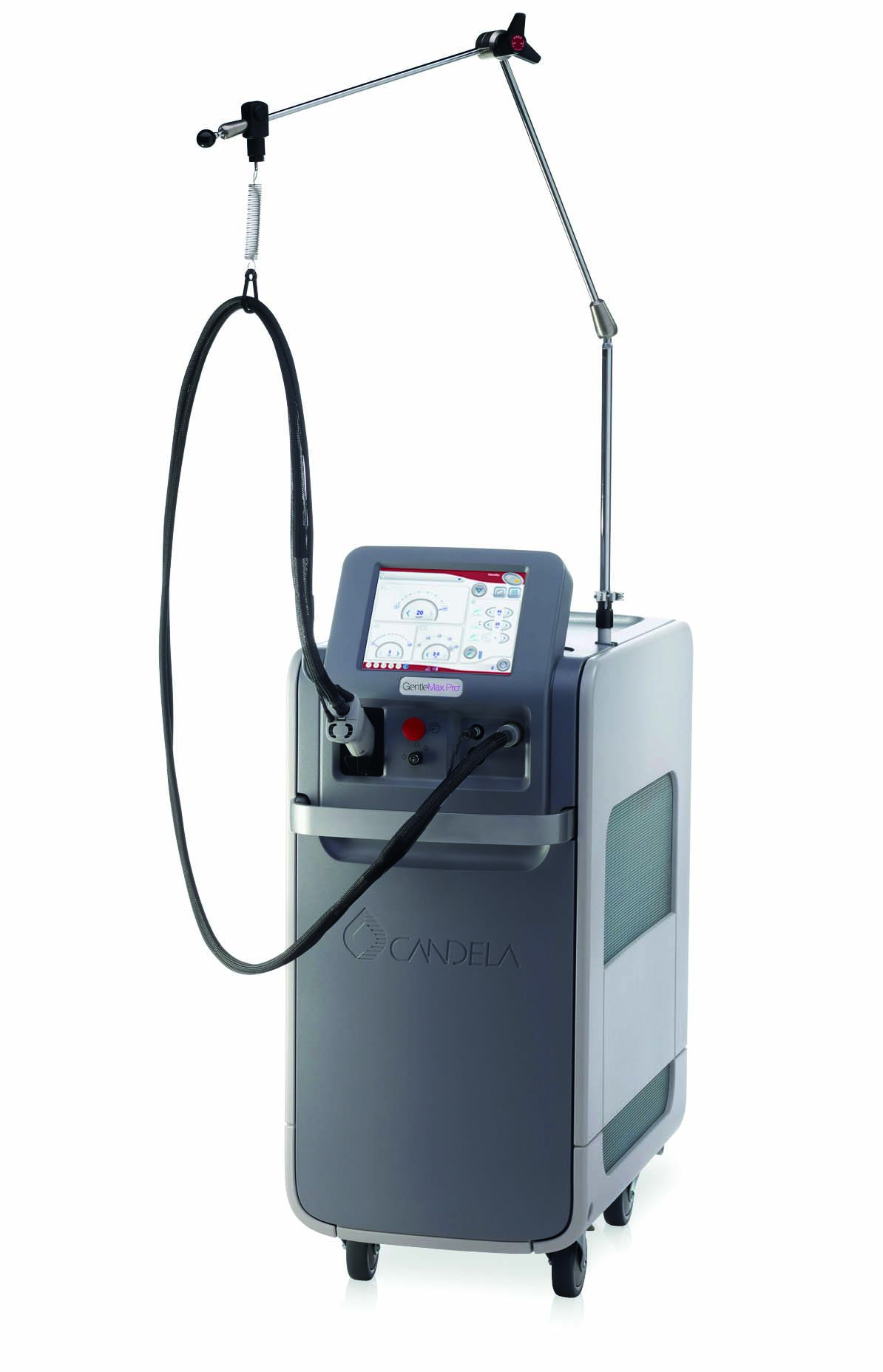About Dark Spot Removal
What is dark spot removal? How does it work?
Dark spots is an umbrella term for different types of pigmented lesions such as freckles, sun spots, seborrheic keratosis, birthmarks (cafe au lait). Each of these lesions can be treated with the Candela GentleMax Pro.
When skin is exposed to ultraviolet light, melanosomes (organelles responsible for creating melanin) located within the melanocyte produce melanin (responsible for the color of our skin and hair). The 755 nm wavelength is absorbed by the melanosomes located within the benign pigmented lesion. Once the light is absorbed, the temperature within the lesion is increased high enough to destruct the lesion. The desired clinical endpoint when treating benign pigmented lesions is erythema around the lesion and darkening of the brown spot.

Benefits
Cleared or less visible dark spot
Improved skin texture
Precise and effective
Regained confidence
Fast treatment time
FAQs
Other than general treatment contraindications, skin types IV-VI are not eligible for dark spot removal with the GentleMax Pro. Using the Alexandrite 755nm wavelength, the laser is targeting melanin on the superficial layers of the skin. The isolated lesion present in fair skin tones allows the laser to practice selective photothermolysis, or targeting a specific area without damaging the surrounding tissue.
Also, people with melasma are not the best candidate for pigmented lesion removal. The GentleMax Pro laser, while effective for general pigmented lesions, can create too much heat, which may irritate the skin and worsen melasma. Because melasma involves deeper skin layers, lasers that are gentler and target the pigment more precisely, like Q-switched lasers or fractional lasers, are often better options. These treatments are safer for melasma, reducing the risk of irritation or hyperpigmentation.
However, there are other machines that treat pigmented lesions for all skin types and melasma! Keep an eye out for additions to our service menu soon!
Your laser professional will clean the area and, depending on the lesion, draw a white pencil around the area(s) to further isolate the pigment. You then will feel a quick burst of heat followed by immediate darkening of the lesion. For areas with more congested pigment, like the chest, you will receive what is called a “global treatment” which involves a hovering sweeping motion over the area performed in sections. The global treatment can also provide overall skin rejuvenation! You may also see minor erythema (redness) and edema (swelling) surrounding the lesion. We will apply aloe and a cool compress after treatment.
The lesions will look dark brown/grey and form a crust or scab over the area. You can expect this to flake off within the next few weeks. DO NOT scratch the area or any flakes off as this can leave potential scarring. Once the scabs come off on their own, it will reveal fresh baby skin! This new skin will be lighter and could have a lighter/pinkish tone compared to your normal skin tone, and that will take a few more weeks to develop into its original tone.
This answer largely depends on the size and intensity of the pigmented lesion or dark spot. If it is one small isolated area, one could need anywhere from 1-4 treatments spaced about 4 weeks apart. If a client is receiving global treatment for congested freckles, one could need anywhere from 4-6 treatments spaced about 4 weeks apart. It is important to note that we are targeting this specific area aesthetically and not curing the source of how dark spots develop. This means maintenance sessions are necessary to ensure long-term results as well as targeting any new benign pigmented lesions that may come up in another area.
- Avoid sun exposure 2-4 weeks before and after treatment until your physician allows it.
- Your provider may ask you to stop any topical medications or skin care products 3-5 days prior to treatment.
- If you have had a history of perioral herpes simplex virus, your provider may recommend prophylactic antiviral
therapy when treating that area. Follow the directions for your particular medication. - RECENTLY TANNED SKIN CANNOT BE TREATED! If treated within 2 weeks of active (natural sunlight or tanning
booth) tanning, you may develop hypopigmentation (white spots) and this may not clear for 2-3 months or more. - The use of self-tanning skin care products must be discontinued one week before treatment. Any residual self tanner must be removed prior to treatment.
- Immediately after treatment, there may be erythema (redness) and edema (swelling) of each hair follicle in the treatment site, which may last up to 2 hours, or longer. The erythema may last up to 2-3 days. The treated area will feel like a sunburn for a few hours after treatment.
- Your professional may use an optional cooling method after treatment to ensure your comfort.
- A topical soothing skin care product such as aloe vera gel may be applied following treatment if desired.
- Avoid sun exposure to reduce the chance of hyperpigmentation (darker pigmentation) for a minimum of 2 weeks.
- Use a sunblock (SPF 30+) at all times throughout the course of treatment.
- The treated pigment will appear darker immediately and within the first few days following treatment. The
darkened pigment will flake off like dry skin within 7-14 days. Avoid picking or scratching the treated skin.
- Treat the skin gently, as if you had sunburn, for the first 24-48 hours. Keep the skin cool and avoid strenuous activity that can cause the body to overheat.
